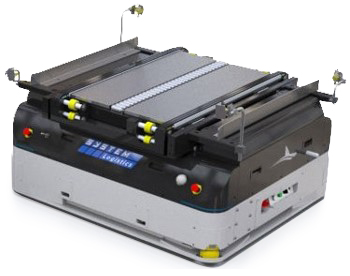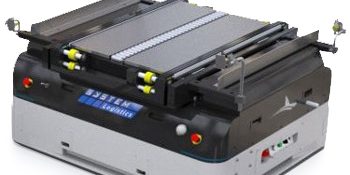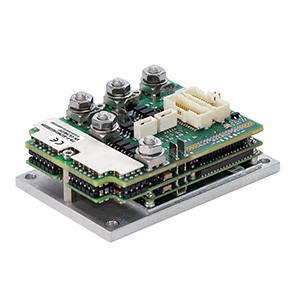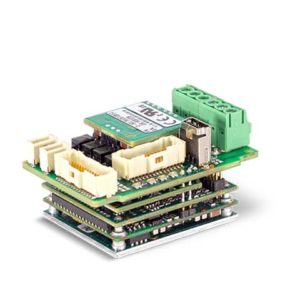System Logistics is a leading global supplier of innovative intralogistics and material handling solutions for warehouses, distribution centers, and manufacturing operations. To meet customers’ requests for more dynamic goods handling, the company turned to Elmo Motion Control to help it develop a flexible, modular laser guided vehicle (LGV) that would replace most of their shuttles on fixed rails. The LGV would connect production lines with automated warehouses and move products between the various internal conveyor systems.
Read this case study to learn about:
- How end-to-end partnership with Elmo accelerates time to market of a modular goods-handling vehicle with integrated STO
- Cost-effectively providing flexible solutions with reliable lead times
- The advantages of Elmo’s “plug and play” compact electromechanical actuators for modular design
- Future-proofing designs to accommodate emerging functional safety requirements

Machine requirements
Having developed a concept for a new LGV technology named SHARK, System Logistics needed advanced motion control solutions to implement it. The vehicle needed maximum maneuverability even in very tight spaces thanks to lateral movement in any direction.
To enhance assembly efficiency and overall vehicle compactness, the company wanted to eliminate electrical hardware in the new design, preferring drives with integrated Safe Torque Off (STO). To allow access to all four sides of the vehicle, the wheels had to be very compact and remain completely underneath the frame.
System Logistics wanted to implement a modular design with future-proof motion control architecture that would enable easy upgrades by adding motorized modules such as roller tables and lifting devices. To achieve this, most or all of the servo drives had to be decentralized and integrated into electro-mechanical modules. This applied to the motorized wheels and to the optional modules like roller tables and lifting devices.
System Logistics needed to find drives with HW qualities that would allow the implementation of their concept (i.e. extreme power density, integrated STO) and which are available with either CanOpen or Ethercat (in the future even FSOE).
The Elmo motion control solution included:
Gold Solo Double Twitter
Ultra Small Servo drive
160A/80VDC, 140A/100VDC, 40A/200VDC
Gold Solo Twitter
Servo Drive, Up to 80A/80V, 70A/100V, 30A/200V
System Logistics chose Elmo’s Gold Solo Double Twitter for the traction wheels. The drive offers extreme power density (G-SOLTWID160/80SESD with fins heatsink) and integrated STO. For steering, they chose Elmo’s Gold Solo Twitter, which also offers robust power density (G-SOLTWIR80/80SE1S with fins heatsink) and includes dual encoder feedback. It also includes a linear actuator for lifting devices. Both drives are CANOpen and Ethercat-enabled and will soon include FailSafe over EtherCAT (FSOE).
Luca Bandini, an AGV Software and Electrical Manager at System Logistics said: “The strategic decision of integrating Elmo’s servo drives into electromechanical modules meant that we had to choose hardware with outstanding power density, energy efficiency, mechanical and thermal ruggedness. Elmo had the best hardware to suit all these purposes. Moreover, Elmo could guarantee full compatibility with the existing control architecture and ones we expected to implement in the future.”
Elmo’s high-quality technical support was also a key consideration. Antonio Cassano, an AGV R&D Software Engineer commented: “Elmo proved to be a real partner during the entire process, from the very first prototypes until the definitive design. We always had a direct channel with their engineers both locally and in their headquarters.”
The outcome
With Elmo, System Logistics was able to cost-effectively provide customers with innovative flexible solutions within reliable lead times. Luca Marchesini, AGV Mechanical Engineering Manager, explained: “The engineering of standalone electromechanical modules was driven by the need to minimize costs and times related to assembly. Thanks to the unique characteristics of Elmo’s hardware our integrators could design what were truly “plug and play” motorized wheels and other compact electromechanical actuators. This modular design approach made us even more flexible and responsive in satisfying the demanding requests of our market.”
For More Information



